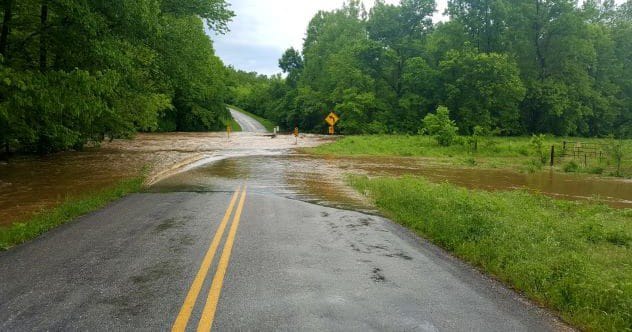The year 2024 has been marked by a series of tragic natural disasters, leaving a trail of devastation and loss around the globe. From powerful earthquakes to relentless hurricanes and catastrophic landslides, these events have not only claimed lives but also reshaped communities. As we reflect on these events, it’s impossible to ignore the looming influence of climate change, exacerbating the intensity and frequency of these natural phenomena.
Let’s explore the ten most shocking natural disasters that rocked the world in 2024, highlighting the profound impact they had on countless lives.
Noto Earthquake
The year began with a devastating 7.5 magnitude earthquake striking the Noto Peninsula in western Japan on New Year’s Day. The earthquake was followed by numerous strong aftershocks, compounding the destruction. Heavy snowfall further complicated rescue efforts in the aftermath of the quake and resulting fires.
The impact was immense, with NASA geophysicist Eric Fielding reporting that parts of the peninsula were lifted as much as 13 feet. Approximately 84,000 homes were damaged, and the estimated repair costs could reach $17.6 billion. Tragically, 281 lives were lost, and many more were injured.[1]
Spanish Floods
On October 29th, the southeastern Spanish province of Valencia experienced an unprecedented downpour, with up to 20 inches of rain falling in just eight hours. The result was catastrophic flash floods that ravaged the city of Valencia and surrounding areas.
Streets transformed into raging rivers, and cars were tossed around like toys. Sadly, 216 people lost their lives, nearly half of whom were over the age of 70. The extreme rainfall was attributed to a high-altitude, low-pressure weather system colliding with warm air over the Mediterranean. The public responded with angry demonstrations, expressing outrage over the perceived lack of warning and inadequate rescue efforts.[2]
Uganda Garbage Landslide
The Kiteezi garbage dump in Kampala, Uganda, became the site of a heartbreaking disaster in August. Torrential rains caused a significant portion of the trash mountain to collapse, resulting in a devastating landslide. This 36-acre dump is located close to residential areas, and many homes were directly affected.
Approximately 1,000 people were displaced, and rescuers had to dig through tons of garbage in a desperate attempt to find survivors. The confirmed death toll reached 35, with 28 people remaining unaccounted for, highlighting the vulnerability of those living near such hazardous sites.[3]
Hurricane Helene
Hurricane Helene, the deadliest hurricane in two decades since Katrina, made landfall in Florida in late September. It then cut a destructive path across Georgia, the Carolinas, Virginia, Tennessee, and Alabama, leaving widespread devastation in its wake.
More than 230 people lost their lives in this catastrophic storm. Survivors faced extensive power outages, severe flooding, and massive infrastructural damage. North Carolina’s Governor Roy Cooper described the storm’s intensity, noting the unexpected magnitude of the flooding and damage.[4]
India Landslide
In July, the Wayanad district in India’s Kerala region was hit by torrential rains, with 22 inches falling in just two days, leading to devastating landslides. By early August, the death toll had tragically risen to 392, with 150 people reported missing. The landslides affected small villages on steep hillsides, where many residents worked on local tea plantations.
The villages of Mundakkai and Chooralmala were virtually wiped out by a massive landslide originating from a nearby mountaintop. The task of identifying bodies continued for weeks, with DNA testing required in many cases. The disaster underscored the vulnerability of communities in hilly regions to extreme weather events.[5]
Indonesian Volcano
Mount Lewotobi Laki-Laki, a volcano on Indonesia’s Flores Island, erupted in early November, sending hot ash 6,500 feet into the air. Lava and rock flows impacted villages on the mountain’s slopes. The Indonesian Center for Volcanology and Geological Disaster Mitigation ordered a complete evacuation within a four-mile radius of the volcano.
Even with advance warnings of the eruption, ten people lost their lives. Footage from the scene showed survivors covered in volcanic ash and homes ablaze. The eruption highlighted the ongoing threat posed by Indonesia’s numerous active volcanoes.[6]
Typhoon Yagi
Typhoon Yagi swept across several Asian countries in early September, with Vietnam being the most severely affected. The storm also impacted Laos, Thailand, and Myanmar. The overall death toll reached 600, with significant casualties in each country.
Flash floods and landslides caused by extreme rainfall were the primary causes of death and destruction. One particularly tragic incident occurred in the Vietnamese village of Lang Nu, where a landslide overwhelmed the population, resulting in a devastating loss of life. The typhoon underscored the region’s vulnerability to extreme weather events.[7]
Drought in Zambia
A severe drought began in Zambia in January 2024, leading the president to declare a national disaster the following month. The United Nations reported that the country experienced its worst water shortage in three decades, leading to significant food shortages.
The drought also severely impacted Zambia’s electricity supply, as up to 80% of its power is generated by the Kariba Dam hydroelectric scheme. Falling water levels threatened the dam’s ability to power turbines, leading to reduced electricity availability. The drought highlighted the interconnectedness of water resources, agriculture, and energy security.[8]
Ethiopian Landslide
In July, torrential rainfall triggered two massive landslides in the Gofa Zone region of Ethiopia. Within days, the death toll reached 257, with the UN warning it could rise as high as 500. Approximately 15,000 people were evacuated from the Kencho Shacha Gozdi district due to the continued risk of further landslides.
Survivors recounted harrowing stories of digging through mud with their bare hands to find those buried. One survivor shared the tragic loss of four of her children, highlighting the immense human cost of the disaster. The landslides underscored the vulnerability of communities in the region to extreme weather events.[9]
Las Vegas Heat Wave
Las Vegas experienced an unprecedented heat wave during the summer of 2024. The average daily temperature during June, July, and August was 96.2°F (35.7°C), making it the hottest summer since records began in 1937.
The Clark County coroner’s office attributed 491 deaths to the exceptionally hot summer, a significant increase from 309 heat fatalities in 2023. Heat-related deaths disproportionately affected individuals under 40 with a history of drug or alcohol abuse. The heat wave underscored the growing threat of extreme heat events in urban areas.[10]
The natural disasters of 2024 serve as a stark reminder of the power of nature and the increasing impact of climate change. From earthquakes and floods to droughts and heat waves, these events have caused immense suffering and highlight the urgent need for global action to mitigate the effects of climate change and enhance disaster preparedness.
What are your thoughts on the increasing frequency and intensity of natural disasters? Share your perspective in the comments below.










